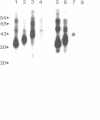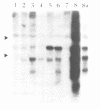Abstract
Two cDNA clones encoding different but related receptors for immunoglobulin G constant domains were isolated from cDNA expression libraries by a ligand-mediated selection procedure ('affinity cloning'). Because both of the receptors encoded by the cDNAs react with CDw32 monoclonal antibodies, and both show the appropriate IgG binding affinity, both appear to be forms of the receptor formerly thought to be a single species called FcRII. The extracellular domains encoded by the isolated clones are closely related to the murine IgG2b/1 beta receptor extracellular domains, but the intracellular domains are unrelated. The receptors expressed in COS cells show a preference for IgG1 among IgG subtypes and no affinity for IgM, IgA or IgE. Abundant expression of the RNAs was detected in myeloid cell lines and placenta.
Full text
PDF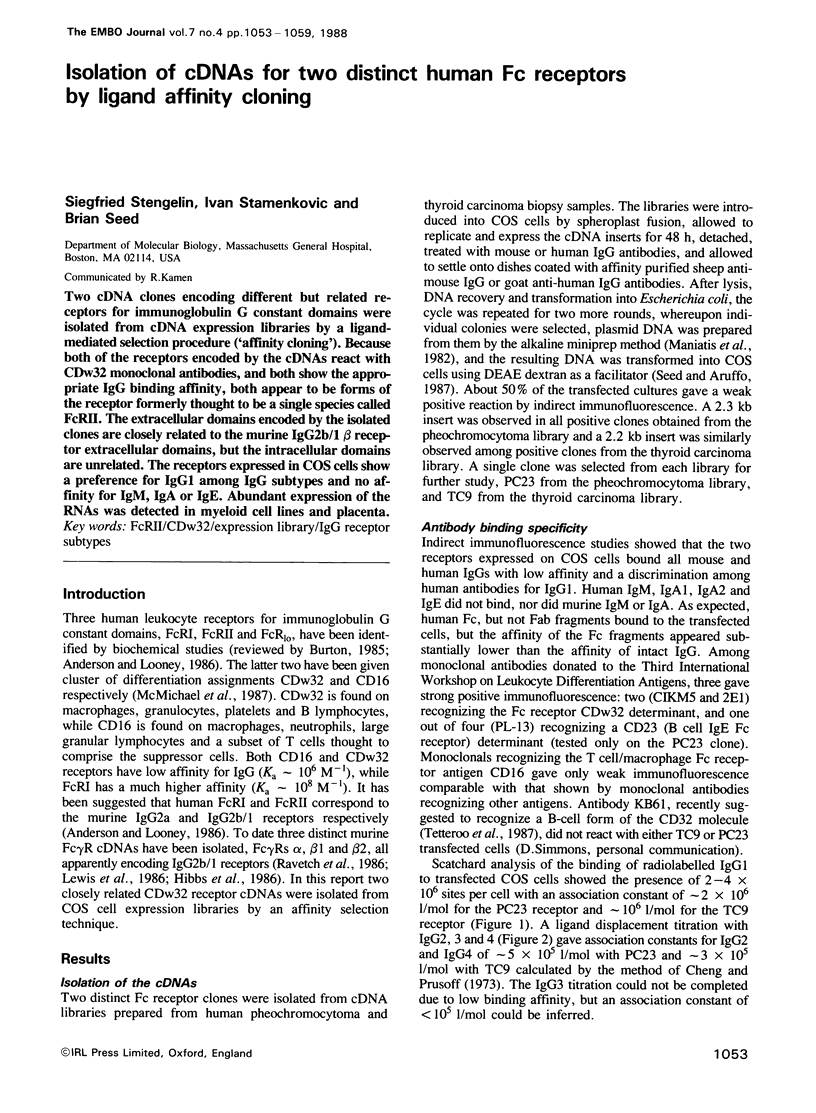
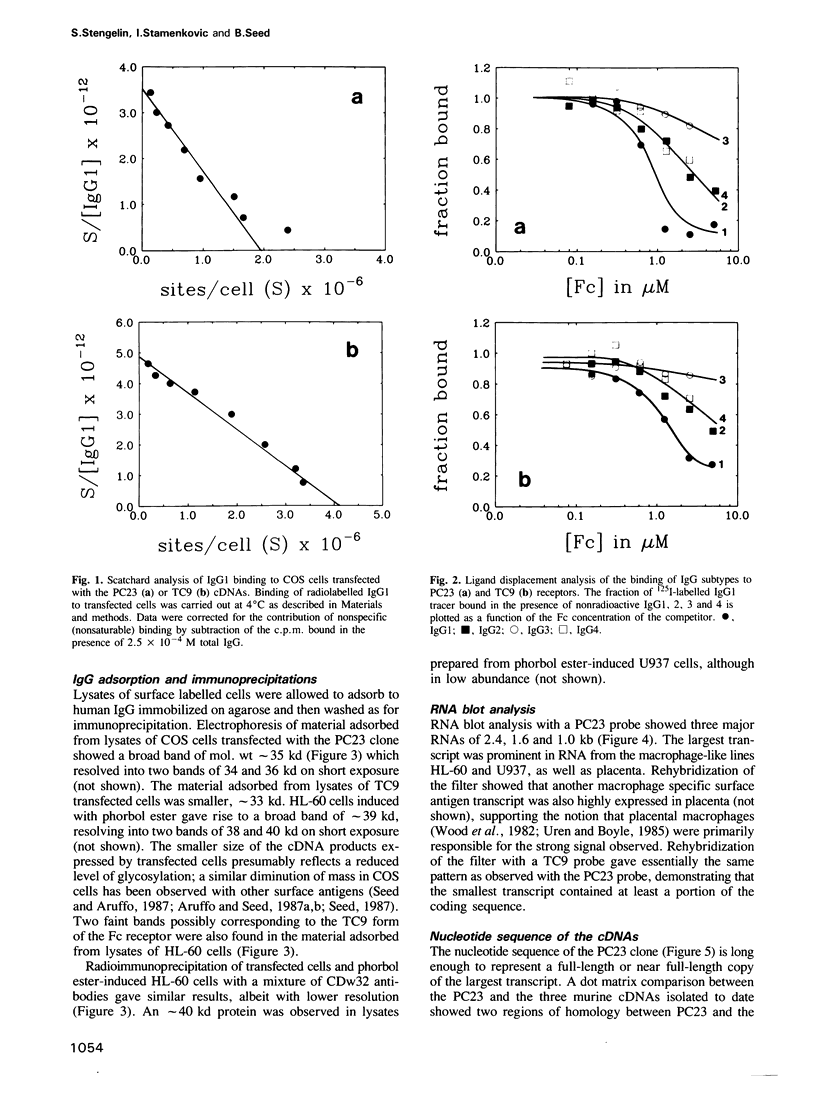
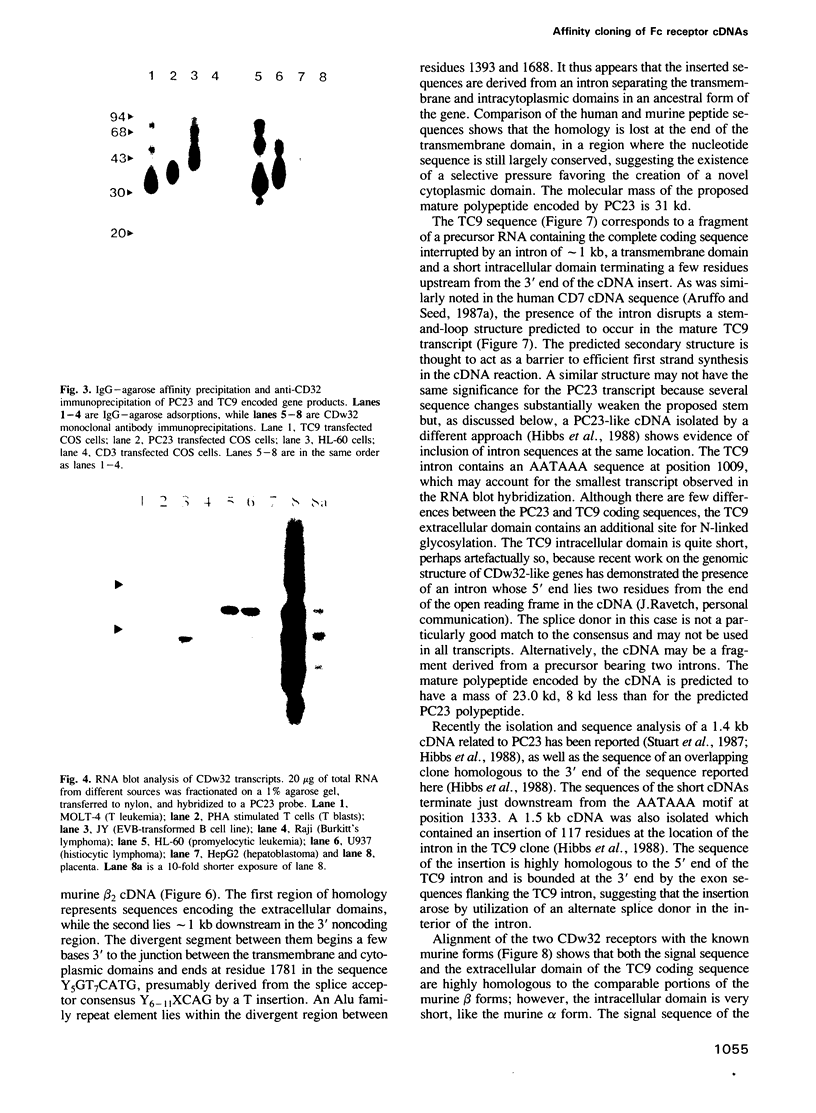
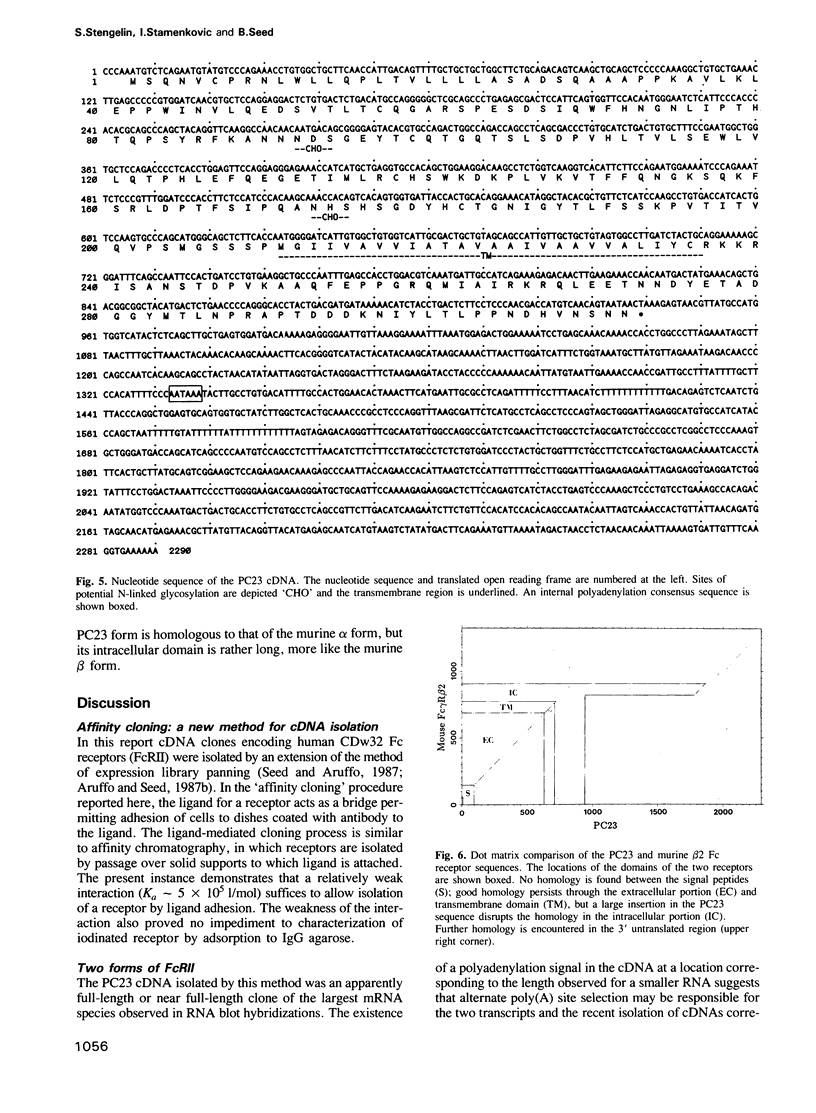
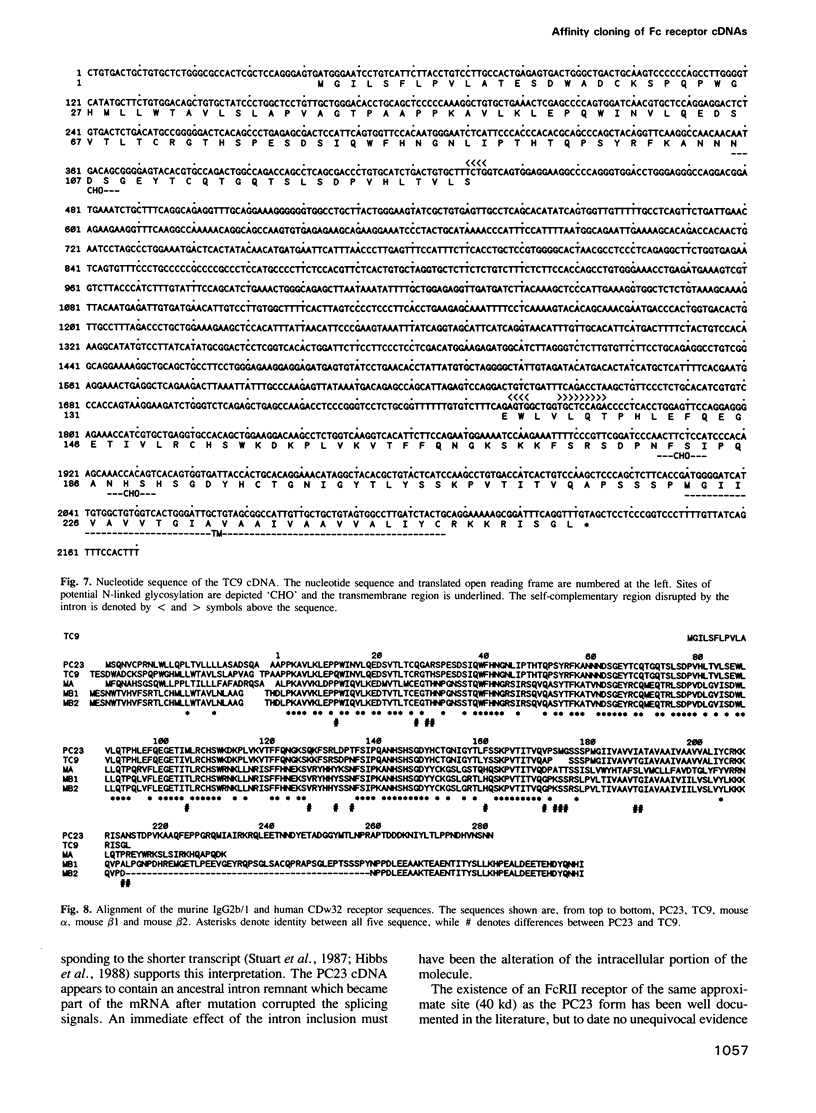
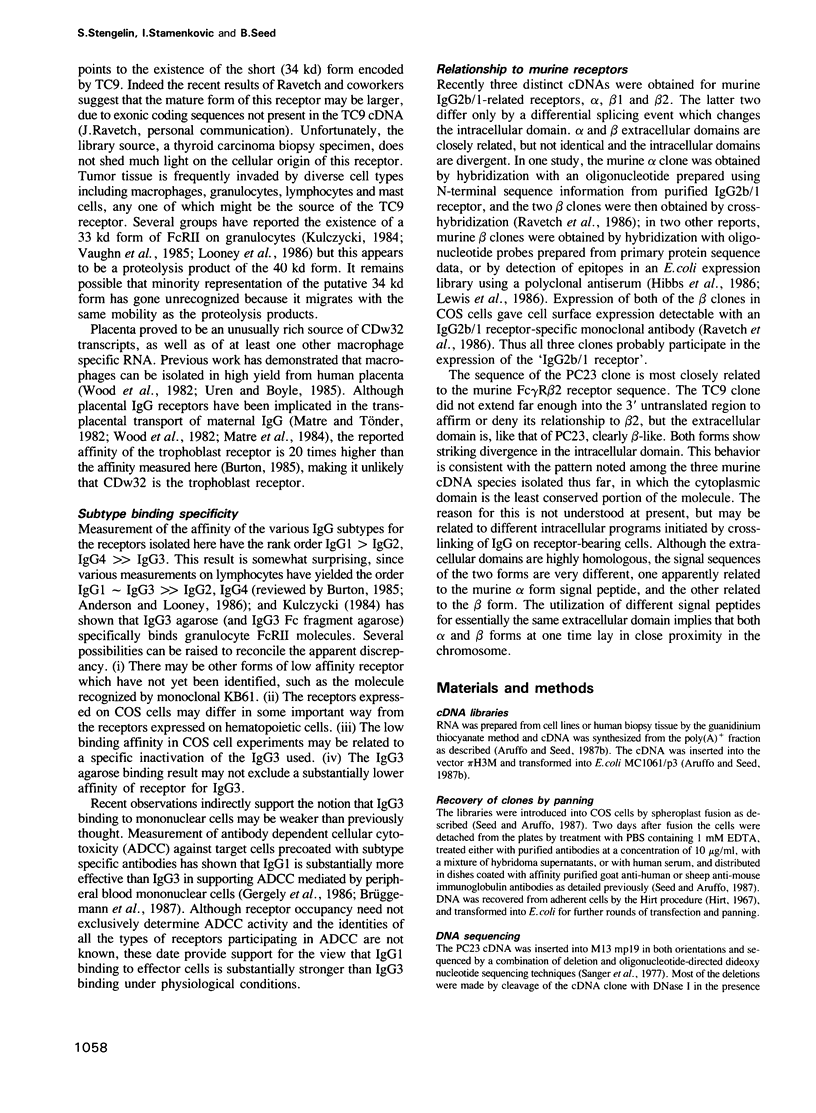
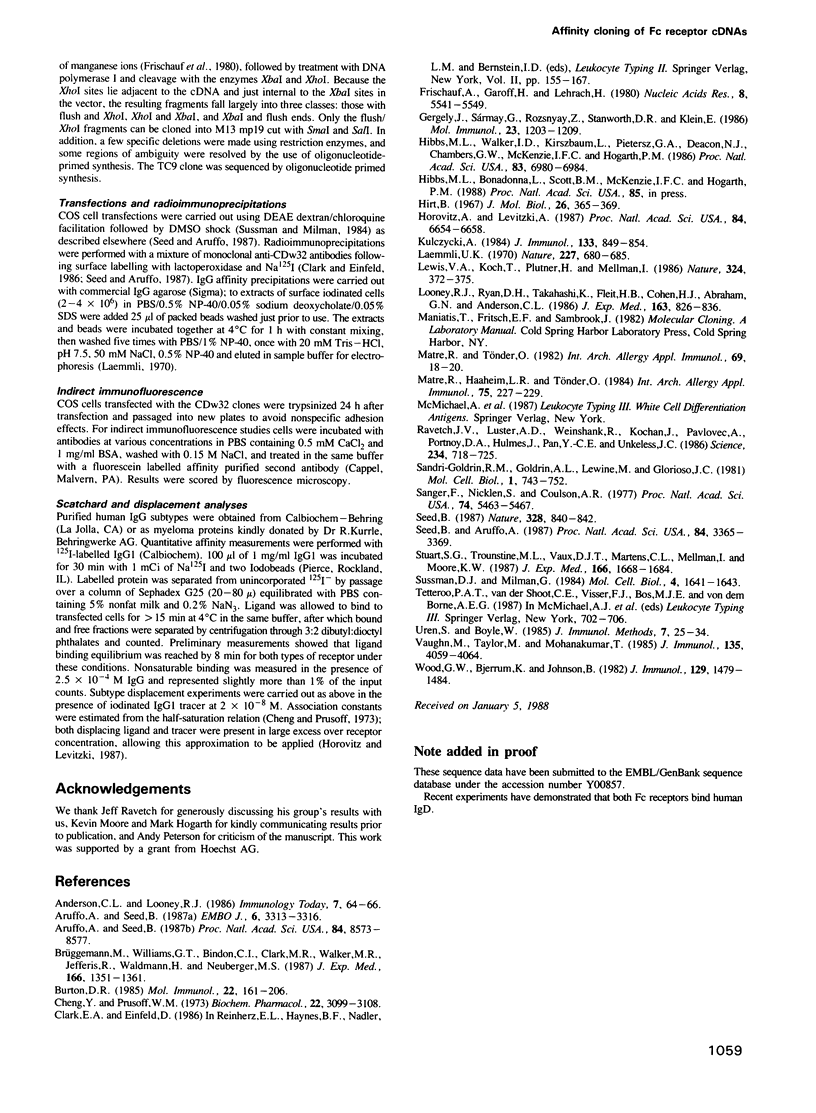
Images in this article
Selected References
These references are in PubMed. This may not be the complete list of references from this article.
- Aruffo A., Seed B. Molecular cloning of a CD28 cDNA by a high-efficiency COS cell expression system. Proc Natl Acad Sci U S A. 1987 Dec;84(23):8573–8577. doi: 10.1073/pnas.84.23.8573. [DOI] [PMC free article] [PubMed] [Google Scholar]
- Aruffo A., Seed B. Molecular cloning of two CD7 (T-cell leukemia antigen) cDNAs by a COS cell expression system. EMBO J. 1987 Nov;6(11):3313–3316. doi: 10.1002/j.1460-2075.1987.tb02651.x. [DOI] [PMC free article] [PubMed] [Google Scholar]
- Brüggemann M., Williams G. T., Bindon C. I., Clark M. R., Walker M. R., Jefferis R., Waldmann H., Neuberger M. S. Comparison of the effector functions of human immunoglobulins using a matched set of chimeric antibodies. J Exp Med. 1987 Nov 1;166(5):1351–1361. doi: 10.1084/jem.166.5.1351. [DOI] [PMC free article] [PubMed] [Google Scholar]
- Burton D. R. Immunoglobulin G: functional sites. Mol Immunol. 1985 Mar;22(3):161–206. doi: 10.1016/0161-5890(85)90151-8. [DOI] [PubMed] [Google Scholar]
- Cheng Y., Prusoff W. H. Relationship between the inhibition constant (K1) and the concentration of inhibitor which causes 50 per cent inhibition (I50) of an enzymatic reaction. Biochem Pharmacol. 1973 Dec 1;22(23):3099–3108. doi: 10.1016/0006-2952(73)90196-2. [DOI] [PubMed] [Google Scholar]
- Frischauf A. M., Garoff H., Lehrach H. A subcloning strategy for DNA sequence analysis. Nucleic Acids Res. 1980 Dec 11;8(23):5541–5549. doi: 10.1093/nar/8.23.5541. [DOI] [PMC free article] [PubMed] [Google Scholar]
- Gergely J., Sármay G., Rozsnyay Z., Stanworth D. R., Klein E. Binding characteristics and isotype specificity of Fc receptors on K cells. Mol Immunol. 1986 Nov;23(11):1203–1209. doi: 10.1016/0161-5890(86)90152-5. [DOI] [PubMed] [Google Scholar]
- Hibbs M. L., Walker I. D., Kirszbaum L., Pietersz G. A., Deacon N. J., Chambers G. W., McKenzie I. F., Hogarth P. M. The murine Fc receptor for immunoglobulin: purification, partial amino acid sequence, and isolation of cDNA clones. Proc Natl Acad Sci U S A. 1986 Sep;83(18):6980–6984. doi: 10.1073/pnas.83.18.6980. [DOI] [PMC free article] [PubMed] [Google Scholar]
- Hirt B. Selective extraction of polyoma DNA from infected mouse cell cultures. J Mol Biol. 1967 Jun 14;26(2):365–369. doi: 10.1016/0022-2836(67)90307-5. [DOI] [PubMed] [Google Scholar]
- Horovitz A., Levitzki A. An accurate method for determination of receptor-ligand and enzyme-inhibitor dissociation constants from displacement curves. Proc Natl Acad Sci U S A. 1987 Oct;84(19):6654–6658. doi: 10.1073/pnas.84.19.6654. [DOI] [PMC free article] [PubMed] [Google Scholar]
- Kulczycki A., Jr Human neutrophils and eosinophils have structurally distinct Fc gamma receptors. J Immunol. 1984 Aug;133(2):849–854. [PubMed] [Google Scholar]
- Laemmli U. K. Cleavage of structural proteins during the assembly of the head of bacteriophage T4. Nature. 1970 Aug 15;227(5259):680–685. doi: 10.1038/227680a0. [DOI] [PubMed] [Google Scholar]
- Lewis V. A., Koch T., Plutner H., Mellman I. A complementary DNA clone for a macrophage-lymphocyte Fc receptor. 1986 Nov 27-Dec 3Nature. 324(6095):372–375. doi: 10.1038/324372a0. [DOI] [PubMed] [Google Scholar]
- Looney R. J., Ryan D. H., Takahashi K., Fleit H. B., Cohen H. J., Abraham G. N., Anderson C. L. Identification of a second class of IgG Fc receptors on human neutrophils. A 40 kilodalton molecule also found on eosinophils. J Exp Med. 1986 Apr 1;163(4):826–836. doi: 10.1084/jem.163.4.826. [DOI] [PMC free article] [PubMed] [Google Scholar]
- Matre R., Haaheim L. R., Tönder O. A monoclonal antibody inhibiting human placental Fc gamma-receptor activity. Int Arch Allergy Appl Immunol. 1984;75(3):227–229. doi: 10.1159/000233620. [DOI] [PubMed] [Google Scholar]
- Matre R., Tönder O. Properties of the solubilized placental receptor for IgG. Int Arch Allergy Appl Immunol. 1982;69(1):18–20. doi: 10.1159/000233139. [DOI] [PubMed] [Google Scholar]
- Ravetch J. V., Luster A. D., Weinshank R., Kochan J., Pavlovec A., Portnoy D. A., Hulmes J., Pan Y. C., Unkeless J. C. Structural heterogeneity and functional domains of murine immunoglobulin G Fc receptors. Science. 1986 Nov 7;234(4777):718–725. doi: 10.1126/science.2946078. [DOI] [PubMed] [Google Scholar]
- Sandri-Goldin R. M., Goldin A. L., Levine M., Glorioso J. C. High-frequency transfer of cloned herpes simplex virus type 1 sequences to mammalian cells by protoplast fusion. Mol Cell Biol. 1981 Aug;1(8):743–752. doi: 10.1128/mcb.1.8.743. [DOI] [PMC free article] [PubMed] [Google Scholar]
- Sanger F., Nicklen S., Coulson A. R. DNA sequencing with chain-terminating inhibitors. Proc Natl Acad Sci U S A. 1977 Dec;74(12):5463–5467. doi: 10.1073/pnas.74.12.5463. [DOI] [PMC free article] [PubMed] [Google Scholar]
- Seed B. An LFA-3 cDNA encodes a phospholipid-linked membrane protein homologous to its receptor CD2. 1987 Oct 29-Nov 4Nature. 329(6142):840–842. doi: 10.1038/329840a0. [DOI] [PubMed] [Google Scholar]
- Seed B., Aruffo A. Molecular cloning of the CD2 antigen, the T-cell erythrocyte receptor, by a rapid immunoselection procedure. Proc Natl Acad Sci U S A. 1987 May;84(10):3365–3369. doi: 10.1073/pnas.84.10.3365. [DOI] [PMC free article] [PubMed] [Google Scholar]
- Stuart S. G., Trounstine M. L., Vaux D. J., Koch T., Martens C. L., Mellman I., Moore K. W. Isolation and expression of cDNA clones encoding a human receptor for IgG (Fc gamma RII). J Exp Med. 1987 Dec 1;166(6):1668–1684. doi: 10.1084/jem.166.6.1668. [DOI] [PMC free article] [PubMed] [Google Scholar]
- Sussman D. J., Milman G. Short-term, high-efficiency expression of transfected DNA. Mol Cell Biol. 1984 Aug;4(8):1641–1643. doi: 10.1128/mcb.4.8.1641. [DOI] [PMC free article] [PubMed] [Google Scholar]
- Uren S., Boyle W. Isolation of macrophages from human placenta. J Immunol Methods. 1985 Apr 8;78(1):25–34. doi: 10.1016/0022-1759(85)90326-6. [DOI] [PubMed] [Google Scholar]
- Vaughn M., Taylor M., Mohanakumar T. Characterization of human IgG Fc receptors. J Immunol. 1985 Dec;135(6):4059–4065. [PubMed] [Google Scholar]
- Wood G. W., Bjerrum K., Johnson B. Detection of IgG bound within human trophoblast. J Immunol. 1982 Oct;129(4):1479–1484. [PubMed] [Google Scholar]



